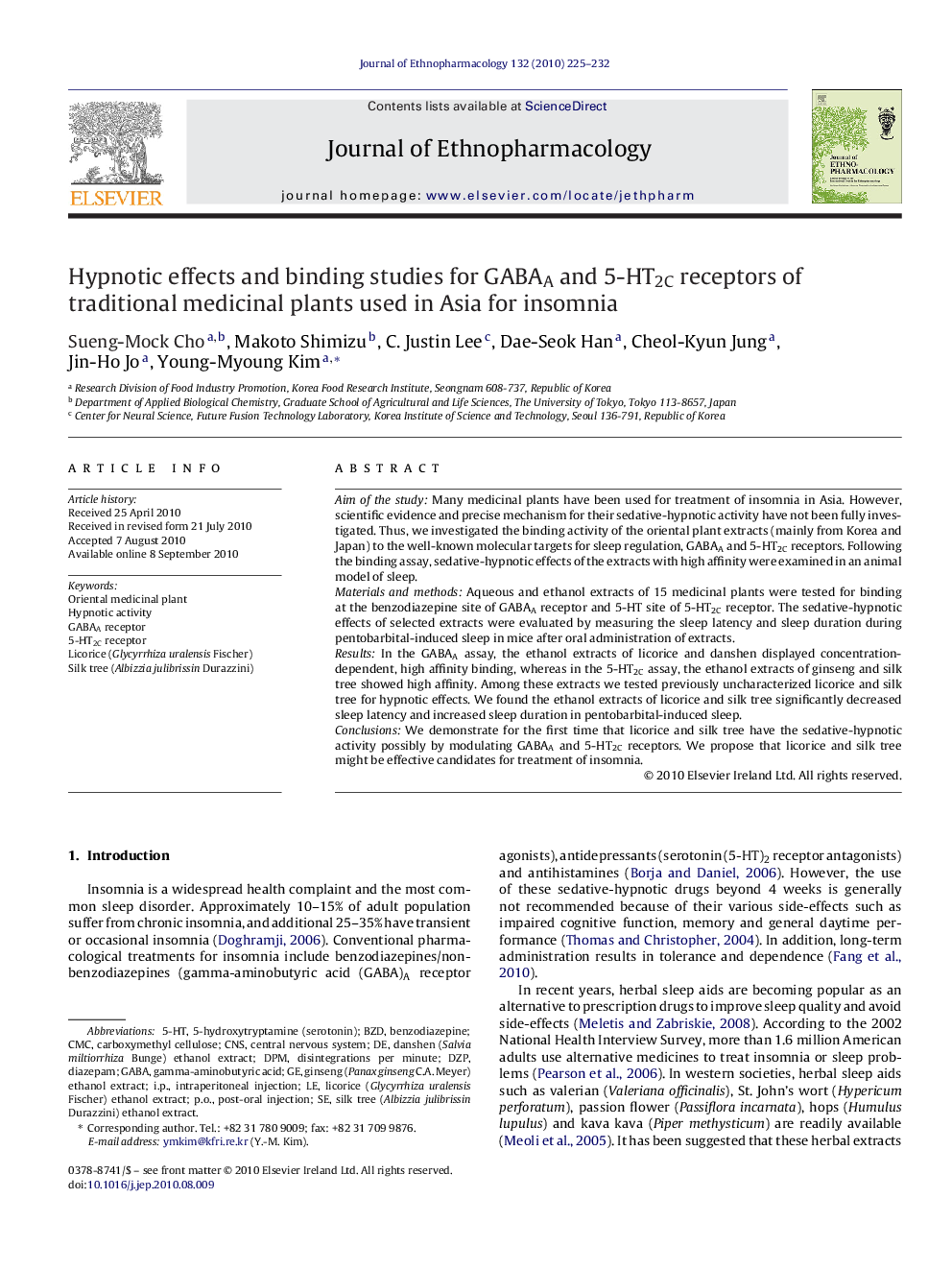| Article ID | Journal | Published Year | Pages | File Type |
|---|---|---|---|---|
| 2545670 | Journal of Ethnopharmacology | 2010 | 8 Pages |
Aim of the studyMany medicinal plants have been used for treatment of insomnia in Asia. However, scientific evidence and precise mechanism for their sedative-hypnotic activity have not been fully investigated. Thus, we investigated the binding activity of the oriental plant extracts (mainly from Korea and Japan) to the well-known molecular targets for sleep regulation, GABAA and 5-HT2C receptors. Following the binding assay, sedative-hypnotic effects of the extracts with high affinity were examined in an animal model of sleep.Materials and methodsAqueous and ethanol extracts of 15 medicinal plants were tested for binding at the benzodiazepine site of GABAA receptor and 5-HT site of 5-HT2C receptor. The sedative-hypnotic effects of selected extracts were evaluated by measuring the sleep latency and sleep duration during pentobarbital-induced sleep in mice after oral administration of extracts.ResultsIn the GABAA assay, the ethanol extracts of licorice and danshen displayed concentration-dependent, high affinity binding, whereas in the 5-HT2C assay, the ethanol extracts of ginseng and silk tree showed high affinity. Among these extracts we tested previously uncharacterized licorice and silk tree for hypnotic effects. We found the ethanol extracts of licorice and silk tree significantly decreased sleep latency and increased sleep duration in pentobarbital-induced sleep.ConclusionsWe demonstrate for the first time that licorice and silk tree have the sedative-hypnotic activity possibly by modulating GABAA and 5-HT2C receptors. We propose that licorice and silk tree might be effective candidates for treatment of insomnia.
Graphical abstractFigure optionsDownload full-size imageDownload as PowerPoint slide
